
| Philadelphia Delaware |
| DESCRIPTION: The John Heinz NWR at Tinicum, referred to by local birders as Tinicum, is located about two miles north of the Philadelphia International Airport in extreme southwest Philadelphia County and southeast Delaware County. During the time of the first settlements in the region, around 1634, the tidal marshes measured about 5,700 acres. The early settlers diked and drained part of the marsh for grazing. With the arrival of rapid development in the area after World War I the marsh was reduced to about 200 acres. With the help of dedicated local conservationists and the support of the Delaware Valley Ornithological Club, 145 acres was acquired in 1955 and administered by the City of Philadelphia until 1972. This was known as the Tinicum Wildlife Preserve. In 1972 the U.S. Congress gave authorization to the Secretary of the Interior to acquire 1200 acres to establish the Tinicum National Environmental Center. In 1991 the name of the Center was changed to the present John Heinz National Wildlife Refuge at Tinicum to honor the late senator who assisted in preserving the marsh. Today, despite being surrounded by industrial complexes and housing developments, Tinicum continues to be a "hot spot" for birds in Pennsylvania. Over 280 species have been recorded within its boundaries, some of which are very difficult to find elsewhere in the state. The two main attractions for birds and birders at Tinicum are the extensive tidal mudflats of Darby Creek and the large freshwater impoundment within the diked area. The water level within the impoundment is controlled by the use of flood gates to Darby Creek. |
DIRECTIONS: To reach the visitor's center, which is located at 86th Street and Lindbergh Boulevard, from the intersection of I-95 and I-476, take I-95 north 1.1 miles to exit 10, PA 291 east. Follow PA 291, 0.8 miles to the traffic light at the intersection with Bartram Avenue. Turn left onto Bartram Avenue and travel 1.6 miles to the traffic light at the intersection with 84th Street. Turn left and follow 84th Street 0.6 miles to Lindbergh Boulevard. Turn left and follow this road 0.2 mile to a stop sign. Turn right at the sign for the entrance to the refuge. Follow the dirt road to the visitor's center building and parking lot. Birding is good year-round, and each season features specialties to entice birders to return again and again. The gravel dike road, which begins near the visitor's center, is the main birding route. This road, which is closed to cars, also separates the marsh from Darby Creek. The dike is flanked by stands of cattails and fresh-water plants. For those interested in county listing, Darby Creek separates Delaware County from Philadelphia County, thus Tinicum provides the lister with easy access to building large lists for both counties. This separation of the counties becomes less clear-cut once you begin to take the trails at the end of the gravel road, so listers would do well to study the county maps beforehand. As mentioned previously, the gravel road is the principal birding route. About a quarter of the way down the road a wide wooden boardwalk, known as "the Big Boardwalk," connects the dike road to a trail through "Warbler's Woods" on the opposite side of the impoundment. The big boardwalk is good for observing and photographing shorebirds and herons during summer draw-down of the water level. Continuing on the dike road, about .75 mile down from the entrance, a two-story steel observation deck (skeleton of the original visitors center) projects out into the marsh. Barn Swallows nest underneath the structure, and during the fall the nearby crabapple trees provide close views of feeding songbirds. Past the observation deck, the dike road continues southwest, winding between the impoundment and Darby creek, offering several spots to search for nesting Least Bittern, Marsh Wren, and Swamp Sparrow. When you reach a right curve, scan the heavily vegetated areas towards the east for herons and egrets. This is a good stretch to see Bald Eagles soaring over the impoundment or perching in trees or on the tall electric poles lining I-95. Look for the eagles' nest situated in the tallest tree on "Oak Island," the noticeable cluster of trees framed by airport buildings in the background. Just before the road reaches an intersection, there is a narrow trail to the right, leading out to an area to observe waders and ducks in the marsh. (An old observation blind was removed from this location). Turn left at the intersection, to continue around the impoundment. The high dike road goes through a small wooded area. The willows in the water to the left are good for Wood Duck and Green Heron. Prothonotary Warbler have been recorded here in the spring. Off to the right, "Hoy's Pond," accessible via a short path and metal boardwalk, hosts occasional ducks and waders. Turn left at the T-junction onto the old "Trolley Bed" road, and follow the road through a moist wooded area good for Rusty Blackbird in fall and winter and migrant warblers in spring. Leaving sight of the impoundment, the road enters into "Poplar Woods," in which many trees have fallen, and invasive vines cover much habitat. Red-tailed Hawks and Great-horned Owls typically nest in this area of the Refuge. Northern Saw-Whet Owls like to roost during the winter months in the thick honeysuckle vines on both sides of the trail. Look for "whitewash" on vines and pellets on the ground for an indication of their presence. The road then meanders through the woods and exits near meadow habitat good for migrant sparrows in the fall. You are now on the "Haul Road," a service road that leads back to the parking lot and visitor's center. Explore the Haul Road and marked trails leading into "Warbler's Woods" and "Frog Pond" to search for migrant and resident songbirds, including nesting Brown Thrasher, Field and Tree Sparrows, and, in the fall, Orange-crowned Warbler. The 200-acre feature impoundment attracts many species of waterfowl during the fall and winter, including Pied-billed Grebe, Canada Goose, Green-winged Teal, American Black Duck, Mallard, Northern Pintail, Northern Shoveler, Gadwall, American Wigeon, Ring-necked Duck, Bufflehead, Ruddy Duck, Common and Hooded mergansers. Lesser Scaup and Horned Grebe are seen infrequently, while Canvasback, Redhead, and Tundra Swans are rare. Blue-winged Teal arrive in March. American Coot are common in winter. The fresh-water areas also attract large numbers of herons and egrets, including Great Blue Heron, Great and Snowy egrets, and Little Blue Heron (late summer). Glossy Ibis appear nearly annually and Black-crowned Night-Heron occur occasionally. American Bittern is sporadic. During low water levels there may be several hundred herons and egrets feasting on the trapped fish. Among the small waders that frequent the impoundment are Semipalmated Plover, Killdeer (nests), Greater and Lesser yellowlegs, Solitary Sandpiper, Spotted Sandpiper (nests), Semipalmated, Western, Least, White-rumped, Baird's (rare), and Pectoral sandpipers, Dunlin, Stilt Sandpiper, Short-billed and Long-billed dowitchers, and Common Snipe. Wilson's and Red-necked phalaropes are rare. Gulls and terns also frequent the impoundment, with Ring-billed, Herring, and Great Black-backed gulls present year-round. Laughing Gull visit the refuge during the spring and fall and a few Bonaparte's Gull occur during the winter. Forster's Tern arrive in late July and are present through late September. They are occasionally joined by a few Common and Caspian terns. Black Tern occur sporadically in spring and fall, along with an annual Least Tern. Tree Swallows use the nest boxes that dot the impoundment. In late summer large numbers of Tree, Barn, Bank, Northern Rough-winged, and a few Cliff swallows stage in the marsh prior to heading south. Songbirds frequent the small willow trees along the dike and the large woods at the east end of the refuge. Warbler's Woods, on the east side of the impoundment near the Visitors Center, attracts a variety of migrants and residents. Nesting species include Downy Woodpecker, Northern Flicker, Eastern Wood-Pewee, Willow Flycatcher, Great Crested Flycatcher, Eastern Kingbird, Blue Jay, American and Fish crows, Carolina Chickadee, Tufted Titmouse, Carolina, House and Marsh wrens, Blue-gray Gnatcatcher, Wood Thrush, American Robin, Gray Catbird, Northern Mockingbird, Brown Thrasher, Warbling and Red-eyed vireos, Yellow Warbler, Ovenbird, Common Yellowthroat, Northern Cardinal, Indigo Bunting, Eastern Towhee, Field, Song and Swamp sparrows, Red-winged Blackbird, Common Grackle, Brown-headed Cowbird, Baltimore and Orchard orioles, House Finch, and American Goldfinch. During migration, the willows around the visitor's center may be hopping with Blue-headed Vireos (fall), Blue-winged, Tennessee, and Nashville warblers, Northern Parula, Magnolia, Cape May, Black-throated Blue, Yellow-rumped (abundant in fall), Black-throated Green, Blackburnian, Palm, Bay-breasted, Blackpoll, and Black-and-white warblers, American Redstart, Northern Waterthrush, Wilson's and Canada warblers. American Tree, Savannah, Fox, and Lincoln's sparrows can be found along the Haul road. White-crowned Sparrow is rare winter visitor. The abundance of prey at the refuge attracts a large number of raptors including: Northern Harrier, Osprey, Sharp-shinned and Cooper's hawks, Red-shouldered, Broad-winged, and Red-tailed Hawks. American Kestrel, Merlin, and Peregrine Falcon terrorize the shorebirds and ducks. Belted Kingfisher monitor both the creek and the impoundment. Wild Turkeys breed in the refuge, and are commonly seen at the feeders behind the Visitor Center. |
|
Maps - other than Google (Click on map for larger view) |
|
Sub-sites |
Photos 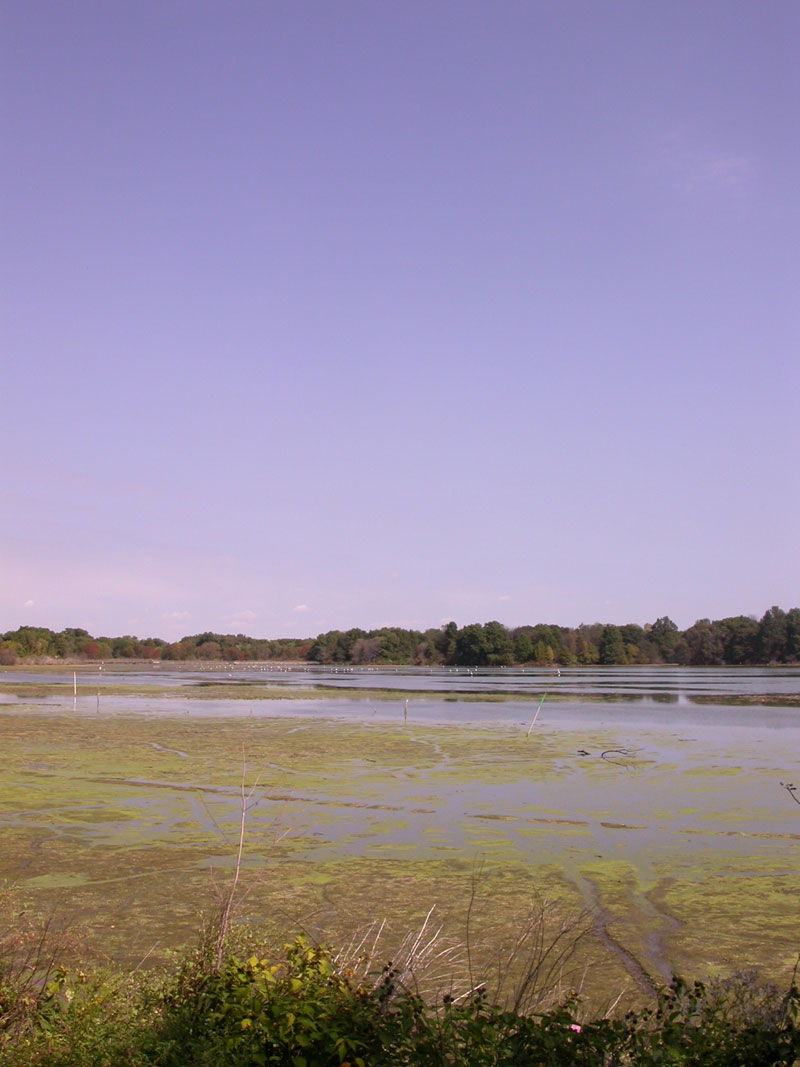
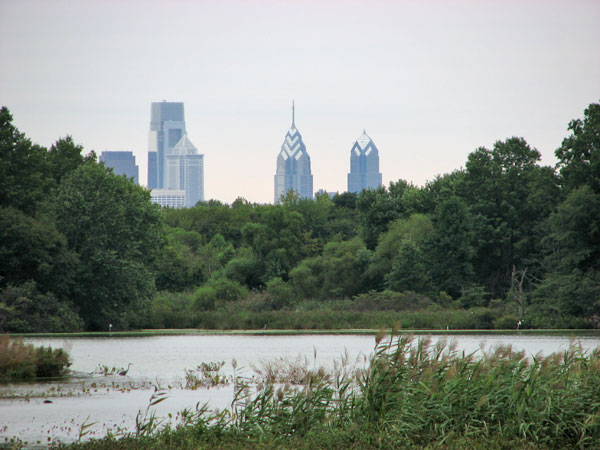
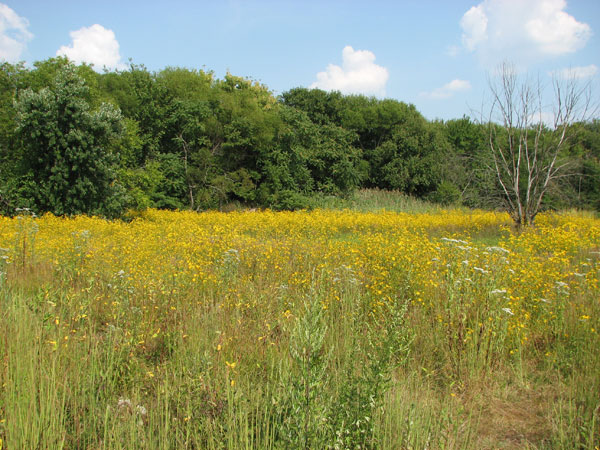
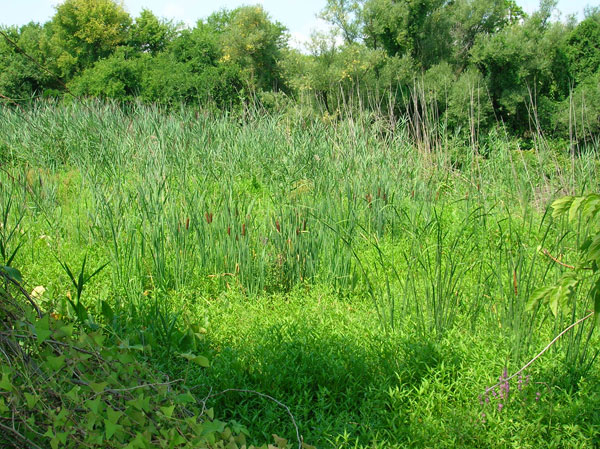
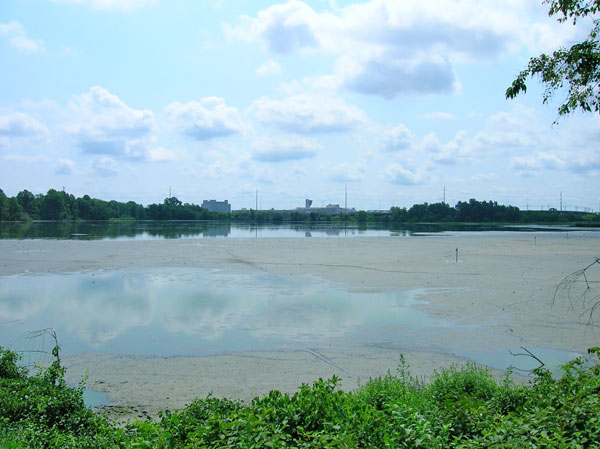
|
| Posted: 2009-10-24 00:00:00 Updated: |
